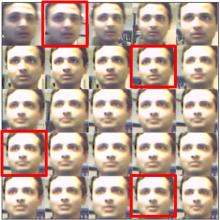
Publication Type:
Authors:
Source:
IEEE Conference on Computer Vision and Pattern Recognition (CVPR) (2011)Document:
Abstract:
Active learning techniques have gained popularity to reduce human effort in labeling data instances for inducing a classifier. When faced with large amounts of unlabeled data, such algorithms automatically identify the exemplar and representative instances to be selected for manual annotation. More recently, there have been attempts towards a batch mode form of active learning, where a batch of data points is simultaneously selected from an unlabeled set. Real-world applications require adaptive approaches for batch selection in active learning. However, existing work in this field has primarily been heuristic and static. In this work, we propose a novel optimization-based framework for dynamic batch mode active learning, where the batch size as well as the selection criteria are combined in a single formulation. The solution procedure has the same computational complexity as existing state-of-the-art static batch mode active learning techniques. Our results on four challenging biometric datasets portray the efficacy of the proposed framework and also certify the potential of this approach in being used for real world biometric recognition applications.
Authors
Projects
The rapid escalation of technology and the widespread emergence of modern technological equipments have resulted in the generation of large quantities of digital data. This has expanded the possibilities of solving real world problems using computational learning…






